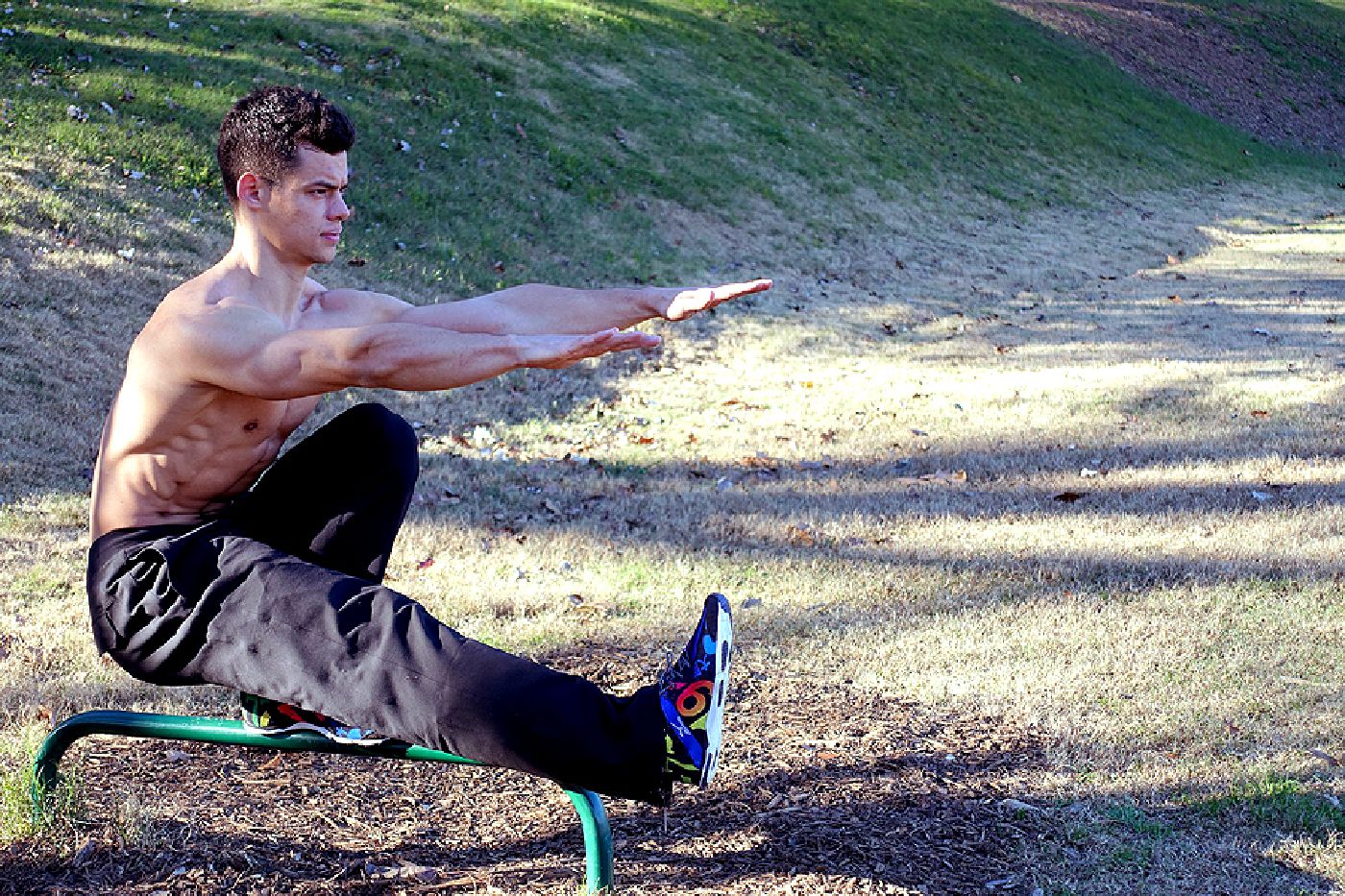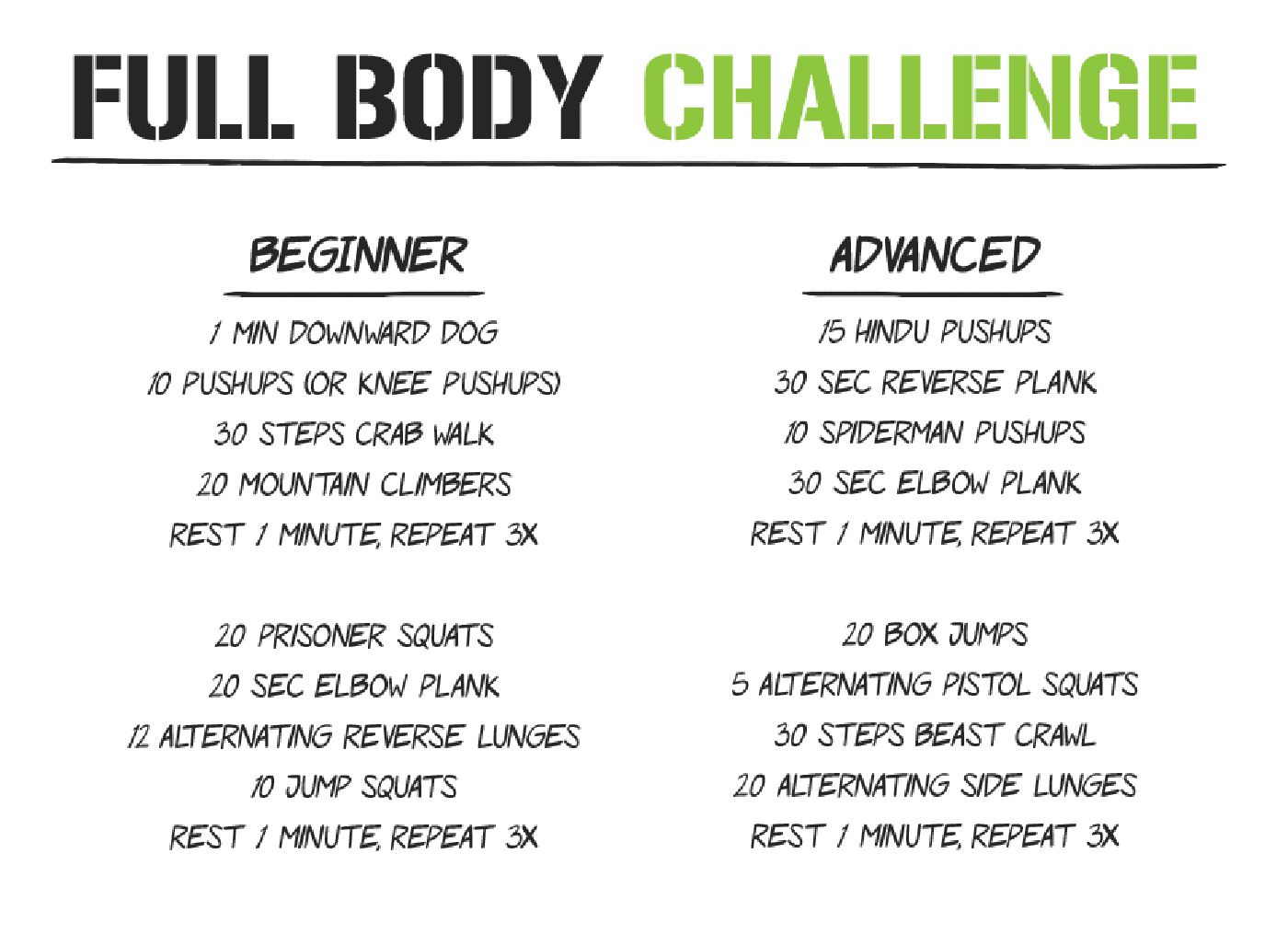

Bodyweight training has been around for as long as our species has been working to survive. In hunter-gatherer times, it was simply part of life. You moved your body through your environment to explore, hunt, gather, and play. Bodyweight training has been highly valued as a staple of military training programs throughout history, as well as being the primary form of training for elite soldiers such as Navy SEALS. Despite this, bodyweight training is undervalued by typical gym goers. Many people assume bodyweight training can't build muscle or strength and is secondary to training with weights. This couldn't be further from the truth.
Bodyweight training includes any type of physical training using your own body as resistance. Yoga, calisthenics, gymnastics, acrobatics, parkour, tricking, martial arts, and dancing are great examples of fitness disciplines that are bodyweight-based. You can improve flexibility, endurance, power, coordination, and strength all while gaining muscle and burning fat. Bodyweight exercises undoubtedly have a place in any good fitness program, regardless of your goal. Here I will outline some of the unique advantages to be gained from including bodyweight exercise into your training.
The key difference between weight training and bodyweight training is the way they activate the kinetic chain. Exercises such as pushups, squats, and pullups are closed kinetic chain exercises, which means your hands or feet are fixed, and your body travels through space. Conversely, the bench press, lat pulldown, and dumbbell curls are open kinetic chain exercises in which your body is still, and your hands or feet move an object through space. Both types of exercises are great, and a good training program can enlist either or both and still provide results. It is important to include closed-chain exercises because they hone the mind-muscle connection. Closed-chain exercises require more neurological efficiency, which means the brain has to be more engaged in the movement, causing more muscle fibers to be activated. This is essential for getting a good “feel” for the movement pattern you're training. This is why pushups are easier to learn than the bench press. Your entire body and brain is more involved in these closed-chain movements.
Bodyweight exercises are excellent for developing functional strength. The majority of bodyweight exercises are compound exercises, which means they engage many large muscle groups at once. When you perform a pushup, your chest is not the only muscle at work. Your entire shoulder girdle is active, your lats are stabilizing your shoulders, and your core, thighs, and hips are activated to keep your body rigid. This type of whole-body activation is one reason why bodyweight training is so effective for strength development.
Bodyweight exercises are also unique in that they provide a more sensory-rich workout experience which leads to better skill development, learning, coordination, and balance. While your head is moving through space orienting your body, your brain is creating strong neural connections to remember the pattern and keep you safe. This improves your proprioceptive skills, or your ability to sense your body's position in space. When performing a difficult or new exercise, you have to be in tune with the subtle details of the movement pattern you're performing. All of the muscles of your body must coordinate with your brain to complete the movements. This is why so many amazing skills can be learned through bodyweight training. Handstands, backflips, pistol squats, L-sits, and one-arm chinups are just a few examples of the most impressive bodyweight skills you can develop with proper training. Bodyweight training is not limited to simple pushups and squats, which is why this type of exercise can be so fun. With weight training, your only progression is to increase the weight. With bodyweight training, there is always a way to make the move more difficult, or another progression to work towards. This keeps your training fresh, challenging, and engaging.
Many people believe that bodyweight training is not enough stimulus to build muscle. The main training principle behind putting on muscle mass is progressive overload, which is simply increasing the stress of training over time. When using weights, progressions consist of adding weight to the bar. In bodyweight programs, progressive overload is achieved by either adding weight to your body or, more commonly, choosing a more difficult variation of the exercise.
For example, say you need to work on the size and definition of your back. You could use a dip belt to add extra weight to your pullups or you could perform archer pullups (a progression to a one-arm pullup). You could begin working with a mechanical disadvantage by doing straight-arm pulling exercises such as tucked front levers. You could use one-arm bodyrows. With bodyweight training, the variations are endless. Progressive overload simply takes into account that you experienced more stress over time, and this will lead to muscle growth. Bodyweight training may actually lead to faster muscle growth because of the increased mind-muscle connection.
Bodyweight training is not the only (or best) option for every goal, but there are more than a few advantages to be gleaned from including some bodyweight exercises in your program. If all you happen to have is some open space and your body, you have no excuse! Try one of these full-body bodyweight workouts!

FACEBOOK COMMENTS WILL BE SHOWN ONLY WHEN YOUR SITE IS ONLINE